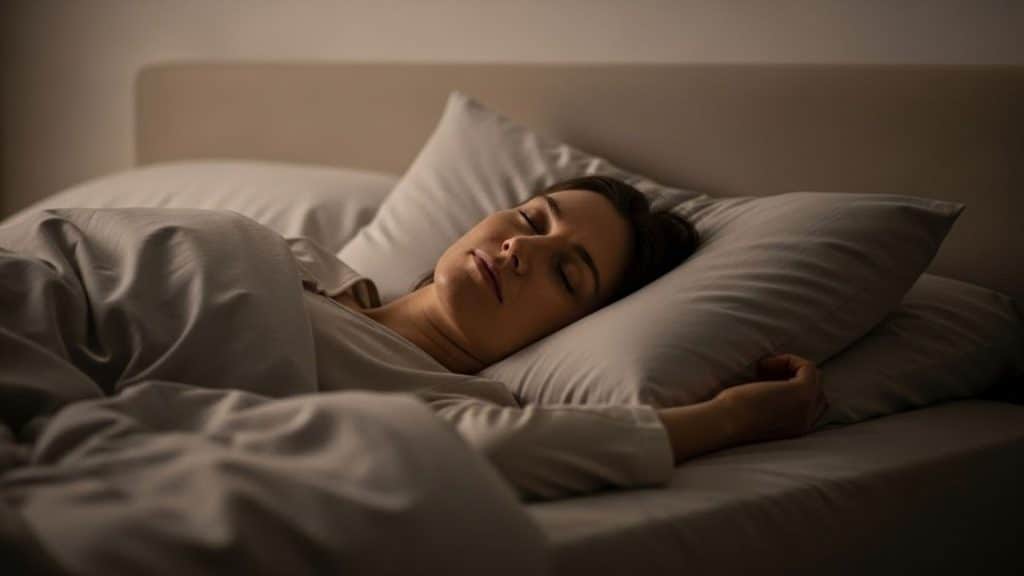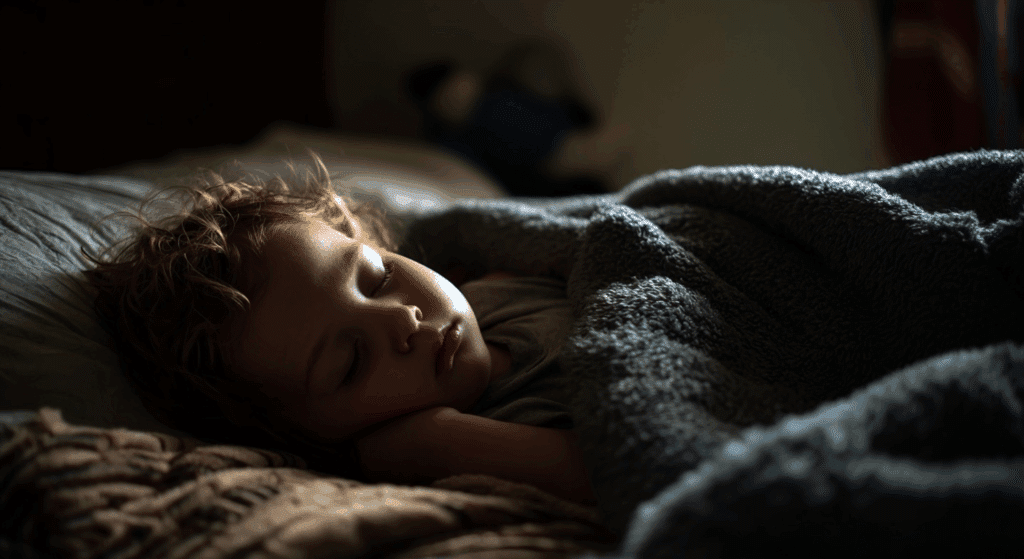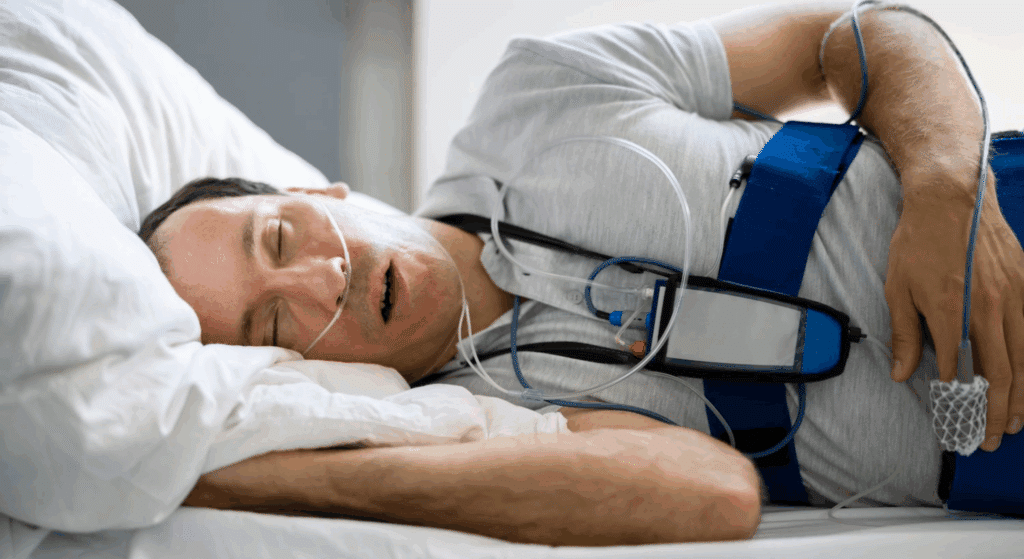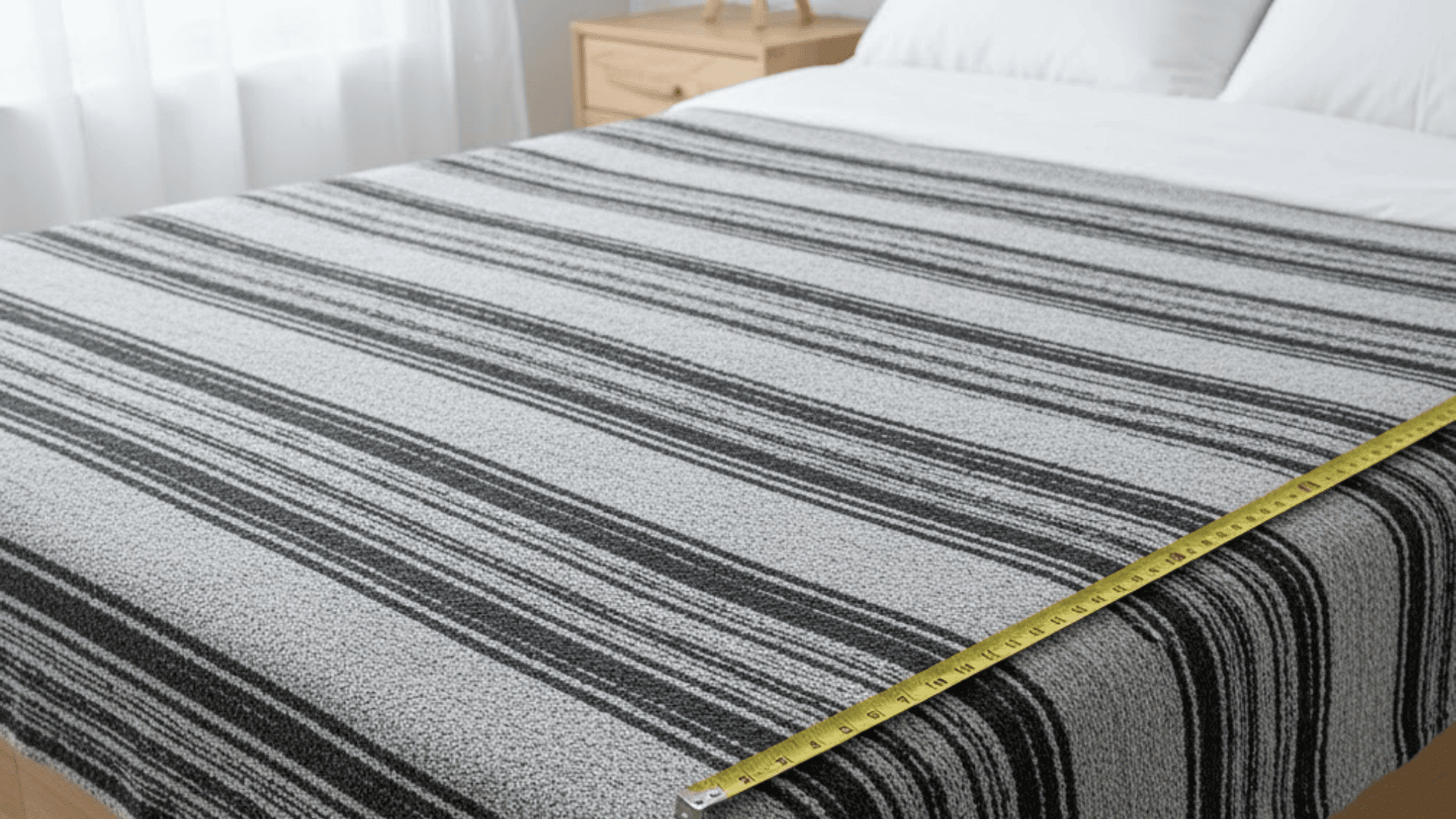Ever wake up with that sharp outer thigh pain that makes getting out of bed feel absolutely impossible? I totally understand how IT band discomfort can turn peaceful nights into restless struggles with constant tossing and turning.
Finding the best sleeping position for IT band pain doesn’t have to be rocket science or require expensive equipment from specialty stores. You deserve restful sleep without worrying about which way to lie down or how many pillows to grab frantically.
Simple position changes can change your nights and help your body heal while you dream peacefully without interruption. Pain shouldn’t control your bedtime routine or steal precious hours of recovery sleep. Tonight could be the very start of your completely pain-free sleep!
What is the IT Band, and Why Does It Hurt at Night
The IT band is a thick strip of tissue running along your outer thigh. It connects your hip to your knee and helps stabilize your leg during movement. When the iliotibial band becomes tight or inflamed, you develop iliotibial band syndrome.
Nighttime pain happens for several reasons that might surprise you. Lying down can put pressure on the inflamed tissue, especially when you sleep on your side. Poor sleeping positions twist your hips and legs, creating more tension along the band.
Inflammation builds up during the day from activities like walking, running, or sitting for extended periods. Daytime activities like excessive running or weak hip muscles make the problem worse, leading to uncomfortable nights.
Best Sleeping Position for IT Band Pain
I’ve found that the right sleeping position can make a huge difference in managing IT band discomfort overnight. These proven positions help reduce strain on your outer thigh while keeping your hips and spine properly aligned for better rest.
1. Flat on Your Back with Pillow Under Knees
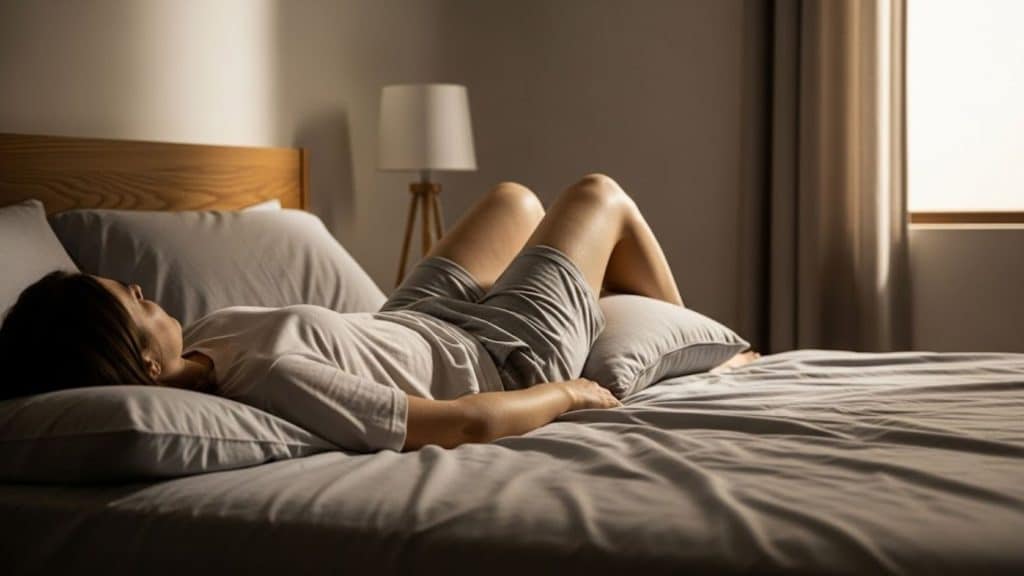
This position keeps your spine straight and reduces pressure on your hips and IT band. Just lie flat on your back and place a soft pillow under your knees.
This slight leg raise helps ease tension and improve blood flow. It’s simple, gentle, and works best for people who want less strain while sleeping on firm or soft mattresses.
2. Side Sleeping with a Knee Pillow
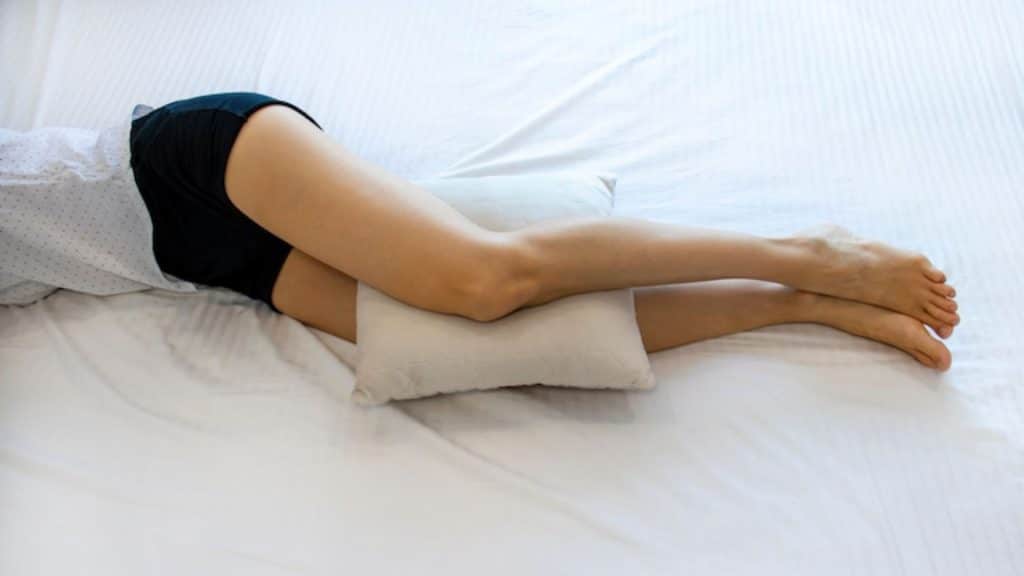
Lie on your unaffected side and place a firm pillow between your knees. This helps keep your hips and legs aligned better. It prevents your top leg from rolling forward and pulling on the IT band.
This reduces twisting and strain on your outer thigh while letting you sleep comfortably on your favorite side without waking up sore.
3. Modified Fetal Position
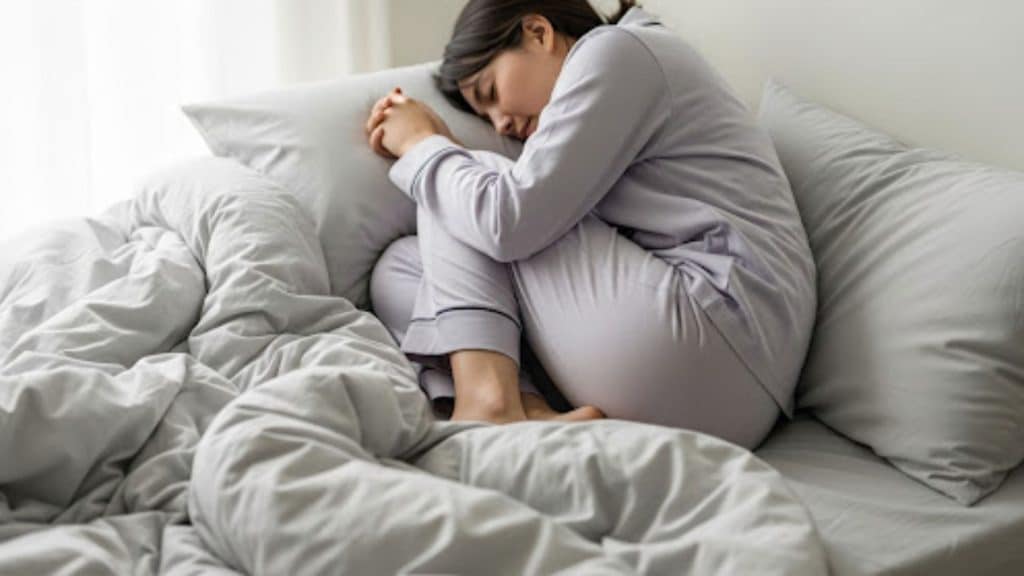
Curl up gently on your side with your knees bent and feet tucked in toward your body. This position can relax your hips and reduce stress on the outer thigh.
It works well if you’re a natural side sleeper and need something soft on your joints. Add a small pillow between your knees if your legs feel tight or misaligned.
4. Back Sleeping with Legs Raised on a Wedge Pillow
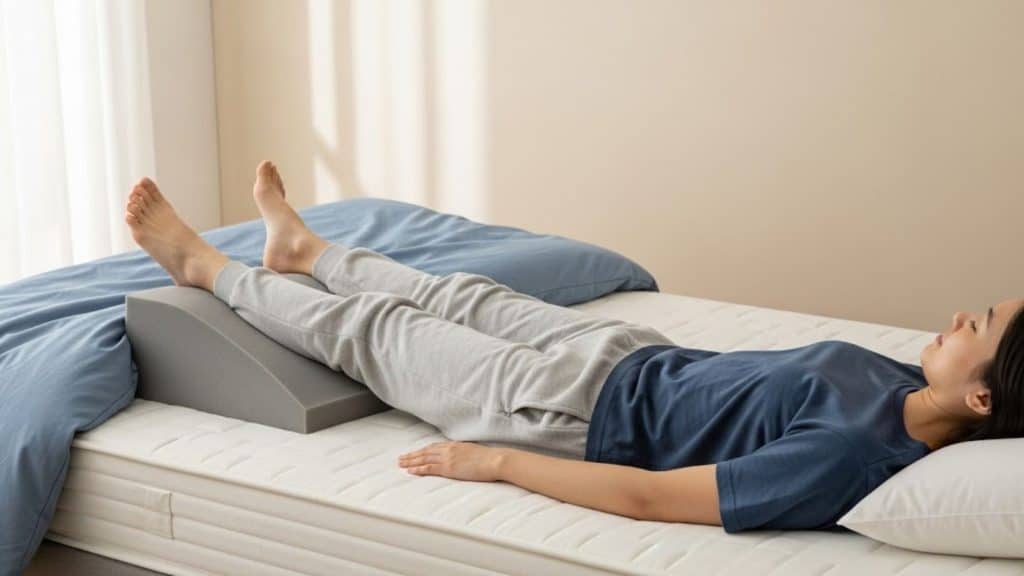
Lie on your back and use a wedge pillow or stack of pillows to raise your legs slightly, around 15 to 20 degrees. This helps reduce swelling and takes pressure off your lower body.
The slight incline improves circulation and eases inflammation along the IT band. It’s a good choice for people dealing with pain flare-ups or stiffness.
5. Reclined Sleeping in a Zero-Gravity Chair or Adjustable Bed

Sleeping semi-upright in a recliner or adjustable bed keeps your knees slightly bent and hips relaxed. This takes pressure off the tight muscles around your IT band.
It’s especially helpful if flat sleeping causes back or hip discomfort. Make sure your feet are supported and your lower back feels neutral before settling in for the night.
6. Side-Lying with Top Leg Supported on a Body Pillow

Lie on your side and rest your top leg fully on a long body pillow. This keeps your hip and knee in a natural line.
It prevents your leg from twisting forward and irritating the IT band. This setup is comfortable and secure, especially for restless sleepers who move a lot during the night.
Tools that Can Help with IT Band Pain Relief
The right tools and gear can make a huge difference in managing IT band pain during sleep and recovery:
| Tool Name | Purpose | Key Features | Cost (USD) |
|---|---|---|---|
| Echo Muscle Scraper | Muscle massage for pain relief | HSA/FSA approved, easy to use | $100–$150 |
| DonJoy Trizone Knee Brace | IT band support and compression | Breathable, athlete-tested | $50–$70 |
| Knee-T Leg Pillow | Knee/hip alignment during sleep | Cooling foam option, strap included | $70–$85 |
| Tempur-Pedic Body Pillow | Full body support during sleep | Firm, shapeable, washable cover | $150–$200 |
| Bear Elite Hybrid Mattress | Pressure relief + hip support | Zoned coils, cooling copper cover | $1,200–$1,700 |
These products range from budget-friendly pillows to premium mattresses that target different aspects of IT band comfort. Choose based on your specific pain triggers and sleeping preferences for the best results.
Tips for Transitioning to a Better Sleep Posture
Changing how you sleep isn’t easy, especially if you’ve favored one position for years. But with the right approach, you can ease into better habits without frustration.
- Short naps first: Start by resting in the new position during short naps to help your body adjust before full nights.
- Light pressure aids: Use small sandbags or a weighted blanket to gently prevent rolling back into old sleep habits.
- Relaxing pre-bed routine: Add breathing exercises or a warm compress to reduce tension before lying down.
- Same sleep setup: Keep your mattress, pillows, and bedding unchanged for at least a week to minimize distractions.
These small changes can lead to long-term relief. Stay consistent for a few nights, and your body will begin to settle into better alignment naturally.
When to See a Professional
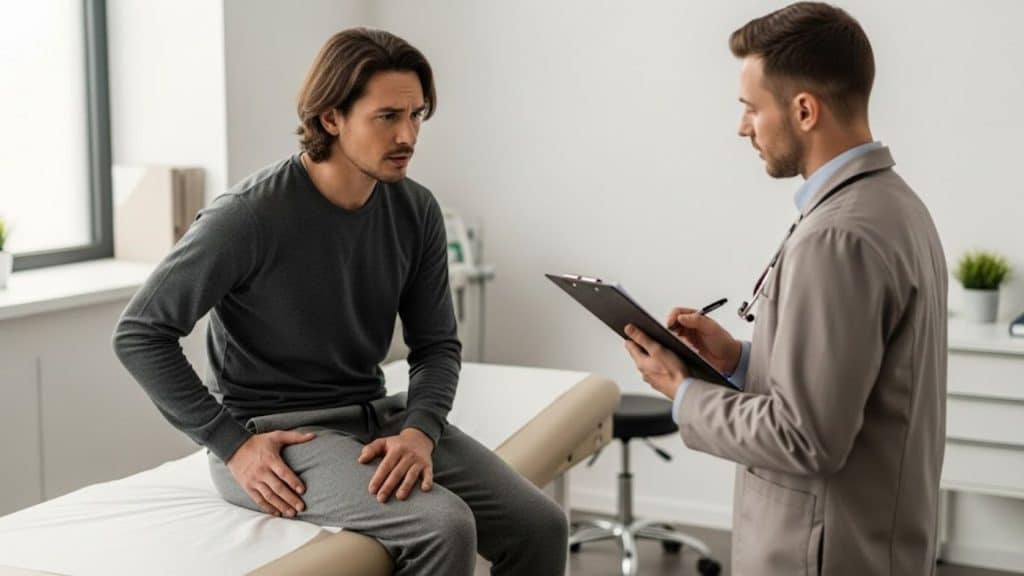
Some IT band pain needs more than just better sleep positions and home remedies. Sharp, shooting pain that wakes you up regularly signals it’s time for professional help. Pain lasting more than two weeks without improvement also warrants a doctor visit.
A physical therapist can observe your movement and sleep patterns to identify hidden problems. They’ll check your hip strength, leg alignment, and sleeping habits that might be making things worse. An orthopedic doctor can order imaging like X-rays or MRIs if needed.
Ask your doctor about specific stretches, whether you need bracing, and if your mattress is helping or hurting. Don’t ignore pain that’s getting worse or spreading to other areas of your leg.
Wrapping It Up
Now you have all the essential tools to find the best sleeping position for IT band pain relief that works perfectly for you. I’ve shared proven methods that countless people use successfully to sleep better and wake up feeling refreshed instead of sore.
You can finally start looking forward to comfortable, healing rest every single night ahead. Remember that consistency always beats perfection when you’re building new sleep habits that stick for the long term.
Your IT band will definitely thank you for these gentle position changes that reduce strain naturally without medication.
Small adjustments tonight can lead to months of better sleep and faster healing for your body. Try these positions tonight and share your amazing sleep success stories in the comments below!


